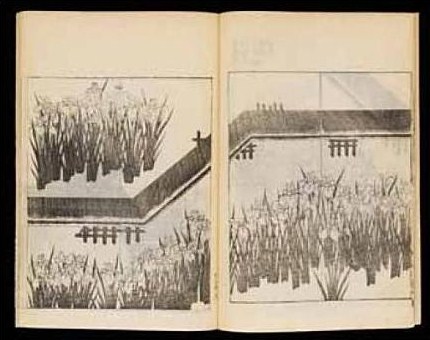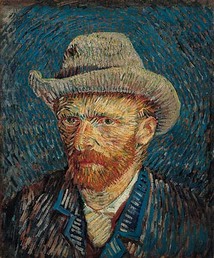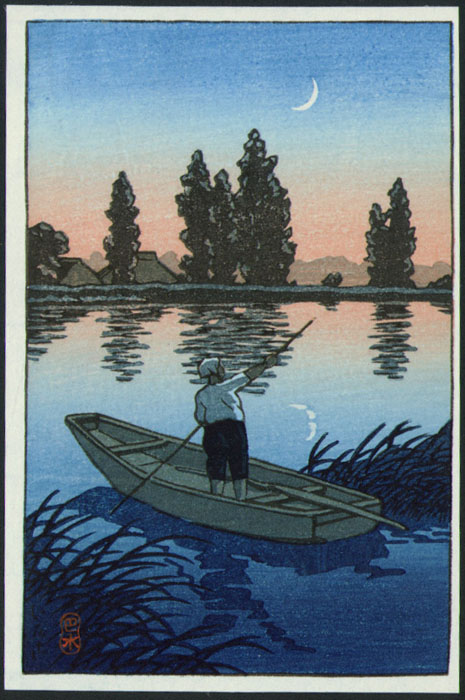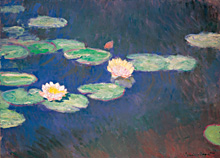
Referring to Ogata Korin’s Irises in a post last week reminded me that an important early 18th century reunion was due to take place this month – the long-awaited exhibition of the two famous Korin pairs of gold folding screens – the Eight-Planked Bridges pair from The Metropolitan Museum of Art in NYC and the Japanese National Treasure Irises, here in Tokyo at the Nezu Museum. Without really considering current events, last week I went to the Nezu and was disappointed to discover it was not to be. As the Nezu’s website states, “In deference to the tragic circumstances of the major earthquake of March 11 and the immediate challenges ahead for our city and our nation, the Nezu and its partners have decided it would be best to reschedule the very important Kōrin Exhibition to Spring 2012.” This sounds like a joint decision, but forgive me if my instincts tell me that the Met must have backed out or perhaps that the insurance carriers wouldn’t allow it. That being said, one can’t blame them for not wanting to part with such a treasure in such unclear times.
As the photos cannot in any way do justice to these works, luckily, the Nezu has its Irises on seasonal display anyway. In typical Japanese style, remember, when the irises are gone, the screens will be too, so I encourage anyone local to run over to the museum. Unfortunately, the Met does not have its pair on display, perhaps for no other reason than they expected them to be in Japan right now. I have added a photo I took of the Irises for those who can’t visit the Nezu, as a counterpoint to the very flat studio photos above.
These irises represent more than just a pretty view of nature. These are a scene from The Tales of Ise, distilled to its purest form. In this particular story, the hero is travelling east from Kyoto when he arrives in Yatsuhashi (Eight-Bridges) in Mikawa province, a place famous for its irises. The beauty of the irises coupled with his homesickness for his wife encourages him to compose a poem of longing and beauty:
Familiar as the skirt
Of a well-worn robe,
And so this distant journeying
Fills my heart with grief.
You can see this motif in other places in Japanese art and irises themselves have become symbolic of the story. Also in the Nezu Museum is this amazing scroll of poems and illustrated fans. Here you can see the iris and eight-planked bridge theme repeated. This vignette style of painting, most often glimpsed in a fan shape, is one of my favorite devices in Japanese art.
And while we are on the subject of iconic iris paintings, I couldn’t help but add these. I have written elsewhere about the influence of Japanese art on Vincent Van Gogh, here is yet another example.
While not possible that Van Gogh could have seen the actual Korin screens, they were reproduced in woodblock print form in the early 19th century in the Korin Hyakuzu Kohen: The Hundred Designs by Korin, which was collected and therefore available in Europe.
For the real thing, check out the beautiful gardens behind the Nezu Museum…
…or later in the month, the iris garden at the Meiji Shrine.
Kinda calling for a post on blues and purples, don’t you think?
Poem source credit: Ogata Korin: Eight-Planked Bridge (Yatsuhashi) (53.7.1-2) | Heilbrunn Timeline of Art History | The Metropolitan Museum of Art)
Image Credits: 1-2. Nezu Museum, 3-4 & 8. me, 5-6. Irises, 1889, collection of The Getty Museum and Irises, 1890, collection of the RijksmuseumVincent Van Gogh via ibiblio.org, 7. Korin Hyakuzu Kohen via Irises in the Garden by Jennifer Helvey, 9. L. Glovins




















